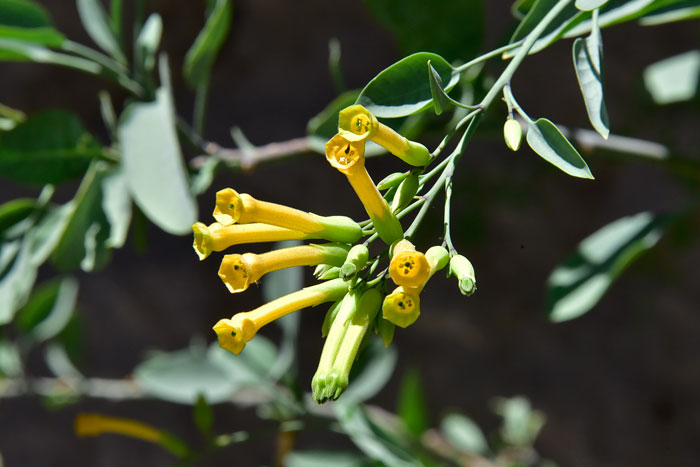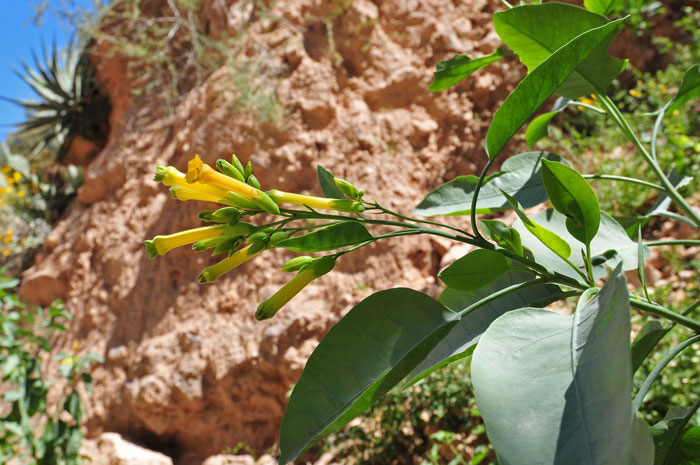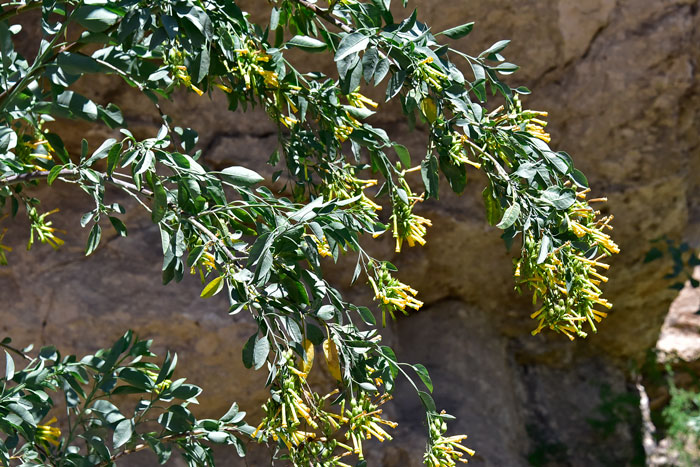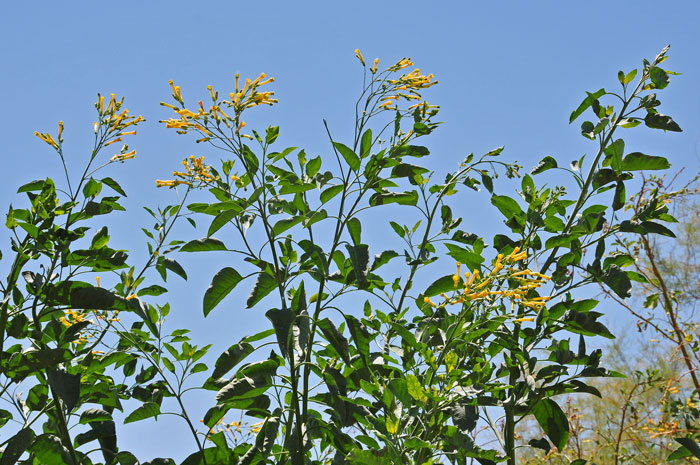Nicotiana glauca, Tree Tobacco




Scientific Name: Nicotiana glauca
Common Name: Tree Tobacco
Also Called: Spanish: Juanloco, Palo Loco, Cornetón, Buena Moza, Juan Loco, Álamo Loco, Tabaco Cimarrón, Maraguana, Maraquiana
Family: Solanaceae, Nightshade or Potato Family
Synonyms: (Siphaulax glabra)
Status: Introduced;
Duration: Perennial
Size: Up to 18 feet high, more or less.
Growth Form: Shrub, tree; plants glabrous and very glaucous, soft wood; plants shrubby or arborescent.
Leaves: Green, margins entire or undulate; glaucous; leaves with long petioles; leaf shape mostly ovate.
Flower Color: Yellow; flowers diurnal; corolla yellow, tubular-funnelform; calyx tube about ⅓ of an inch long;
Flowering Season: January to December; spring and summer in California.
Elevation: Up to 3,000 feet; up to 3,500 in California.
Habitat Preferences: Along streams, ditches, washes, open disturbed flats and slopes.
Recorded Range: Nicotiana glauca is found mainly in the southern coastal states of AL, CA, FL, GA, TX and inland states in AZ, MD, OH and in HI. It is also native throughout all of Baja California and Mexico. In Arizona it is found in the western ⅔ of the state and in Cochise and Greenlee counties.
North America & US County Distribution Map for Nicotiana glauca.
U.S. Weed Information: In North America Nicotiana glauca can be weedy or invasive according to the state of Hawaii: Hawaiian Ecosystems at Risk Project, Biological Resources Division, Haleakala Field Station. Plants included here may become weedy or invasive.
Invasive/Noxious Weed Information: No information available.
Wetland Indicator: In North America Nicotiana glauca has the following wetland designations: Arid West, FAC; Atlantic and Gulf Coastal Plain, FAC; Eastern Mountains and Piedmont, FAC; Great Plains, FAC; Midwest, FAC; Western Mountains, Valleys, and Coast, FAC.
FAC = Facultative, occur in wetlands and non-wetlands
Threatened/Endangered Information: No information available.
In the Southwestern United States, Arizona and Nevada each have 5 species of Nicotiana, in California there are 9 species, New Mexico has 4 species, Texas has 7 species and Utah has 2 species. All data is approximate and subject to taxonomic changes.
Comments: In Southwest Desert Flora also see Desert Tobacco, Nicotiana obtusifolia.
Nicotiana glauca has been used as a dermatological aid, hunting medicine and several other purposes by North American indigenous peoples.
Cahuilla Drug, Dermatological Aid, Poultice of leaves applied to cuts, bruises, swellings and other wounds.
Cahuilla Drug, Ear Medicine, Leaf smoke blown into the ear and covered with a warm pad for earaches.
Cahuilla Drug, Hunting Medicine, Leaves smoked as part of a hunting ritual.
Cahuilla Other, Ceremonial Items, Used by shamans to control rain, increase crop production, divining and improve health of community.
Diegueno Other, Smoke Plant, Leaves used for smoking.
Hawaiian Drug, Dermatological Aid, Plant used for removing the pus from scrofulous sores or boils.
Mahuna Drug, Antirheumatic (External), Infusion of leaves used as a steambath for rheumatism.
Mahuna Drug, Throat Aid, Poultice of leaves applied to inflamed throat glands.
See ethno-botanical uses at Native American Ethnobotany, University of Michigan, Dearborn.

